
Contributed by Michael Brennan / I took the train to Trenton, New Jersey – TRENTON MAKES, THE WORLD TAKES, the old slogan goes – to see Caroline Burton’s painting exhibition “Way Finding” at the Riverside Gallery in the New Jersey State Museum, which also includes a freestanding library, planetarium, theater, a natural history exhibit, an indigenous peoples’ exhibit, and the obligatory outdoor Calder. The complex, originally designed by Frank Grad and Sons of Newark and constructed in 1965, is a classic example of the liberal utopian/modernist cultural center typically frowned upon these days. But I’m happy to report that the campus, self-contained like Lincoln Center, was teeming with visitors from all walks of life. It is very much a living museum, and ideal for Burton, a reconstructed modernist, who in fact depicts its architecture in some of the works on view.
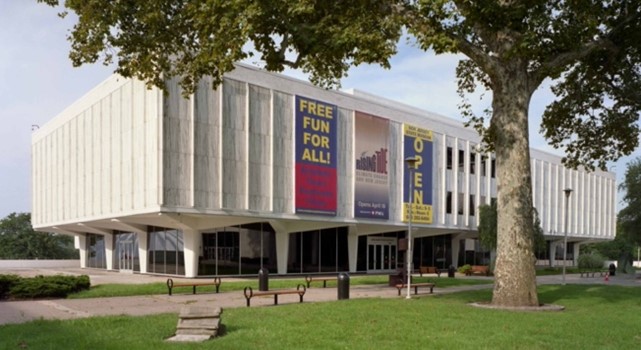
A dozen large paintings occupy the main gallery, and another eight smaller paintings line the hallway outside. All the work is from 2020 or later and has been thoughtfully curated by Sarah P. Vogelman with generous text. The walls are painted with Benjamin Moore Classic Gray, a favorite color of Jasper Johns that appears to shift under changing light conditions.
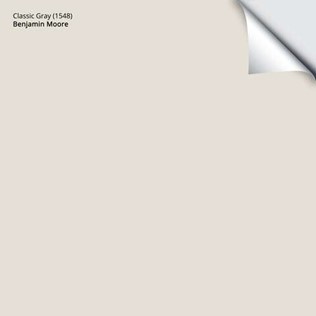
Burton’s paintings too are mostly keyed to silvery gray, though the color is surprisingly active and shifts beguilingly. She features measured amounts of silver and gold metallic paint in her mixes, lending her work a slight iridescence.

Burton’s work is process-driven. She begins with raw or pre-primed canvas, laid out horizontally. She then coats wool Afghans – knitted or crocheted blankets – that she’s purchased from Goodwill or The Salvation Army or received as gifts with acrylic paint. She places the Afghans on top of the canvas, then rolls them from above with paint rollers so that the wet blanket imprints the canvas with a remnant or pattern. Maintaining a Bauhaus attitude, she doesn’t make hierarchical distinctions between art and craft. In essence, she’s taking discarded blankets – presumptively “women’s work” – and repurposing them with feminist jiu-jitsu into richly contextualized abstract paintings. The original makers of the quilts – no doubt mothers and grandmothers – are silent collaborators. In this sense, Burton is heir to Anni Albers.
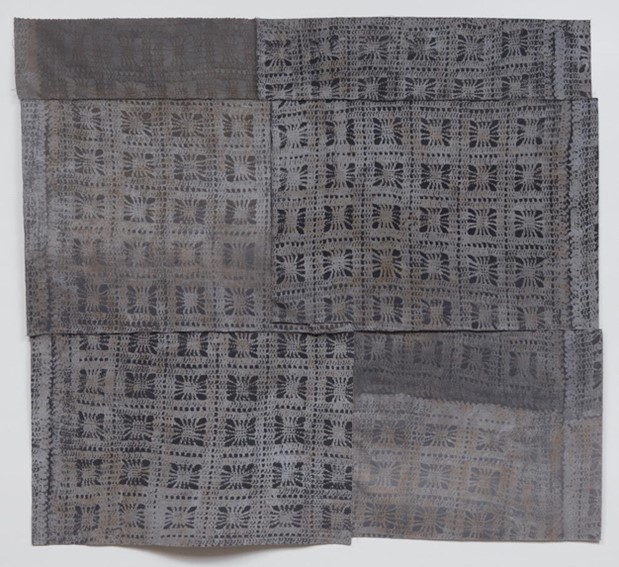
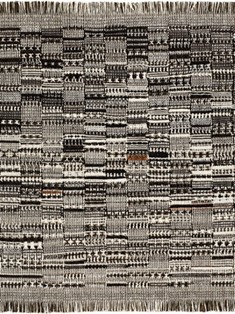
Many painters use the technique of direct printing – a kind of monoprinting — in their work. When Julian Schnabel painted his colossal Purple Action Paintings, he and his assistants bundled up beach towels soaked in paint and imprinted them on giant tarpaulins as a way of scaling up the gesture. Burton’s gesture, however, is closer to Robert Rauschenberg’s printing of the tire of a Ford Model-A in its human scale and sending up of industry’s spiritual pretensions.
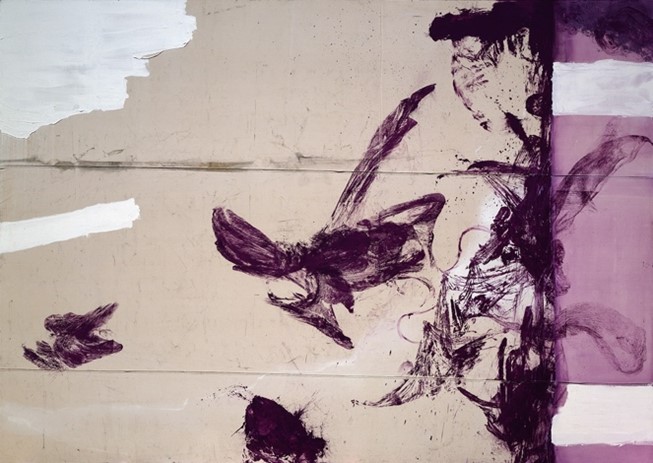
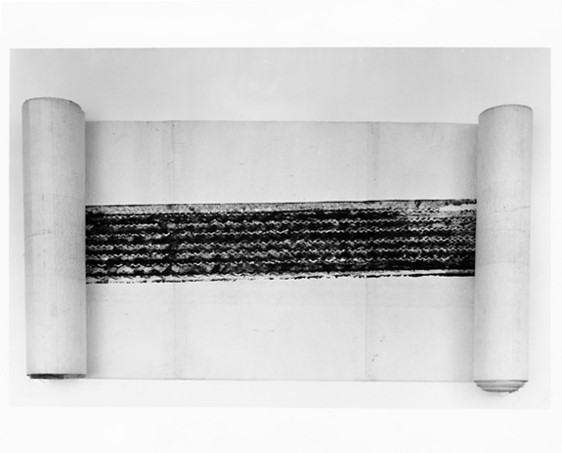
Burton is an unstretched, grommeted canvas painter in the manner of Leon Golub, rather than a drop cloth painter in the manner of Joe Bradley, Oscar Murillo, or hundreds of would-be Basquiats.
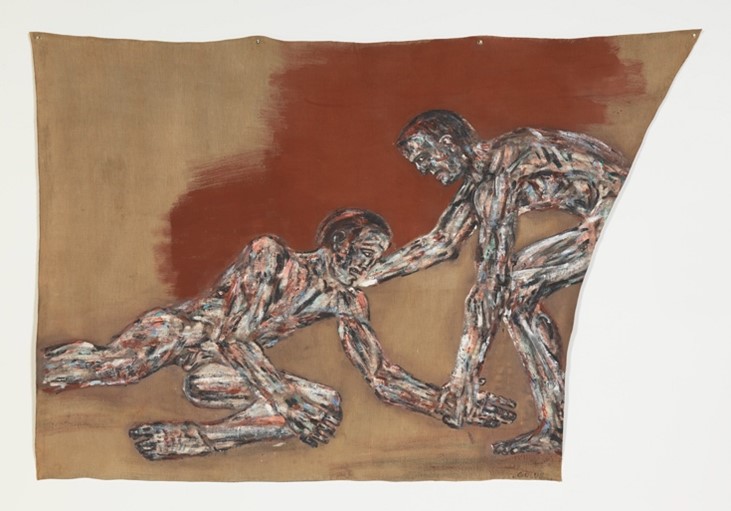
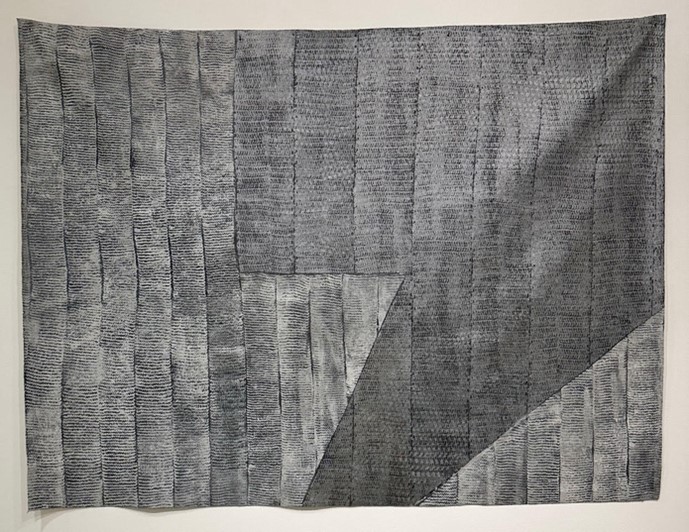
Sometimes she whip-stitches scraps of cut-up canvasses, so Frankensteinian reanimation, reassembly, and realignment are a part of her process, too.
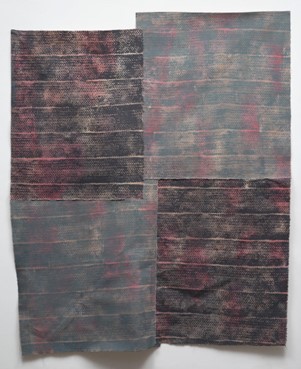
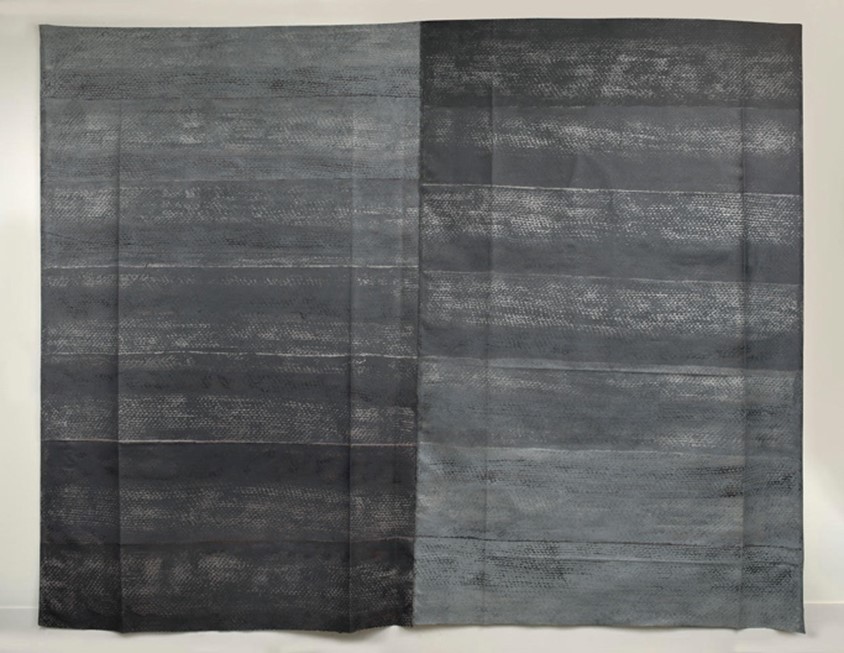
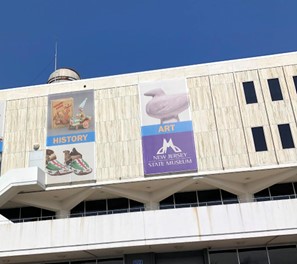
In some cases, Burton responds metaphorically to the Museum’s architecture. The buildings’ pilotis and other architectonic details echo throughout her paintings.
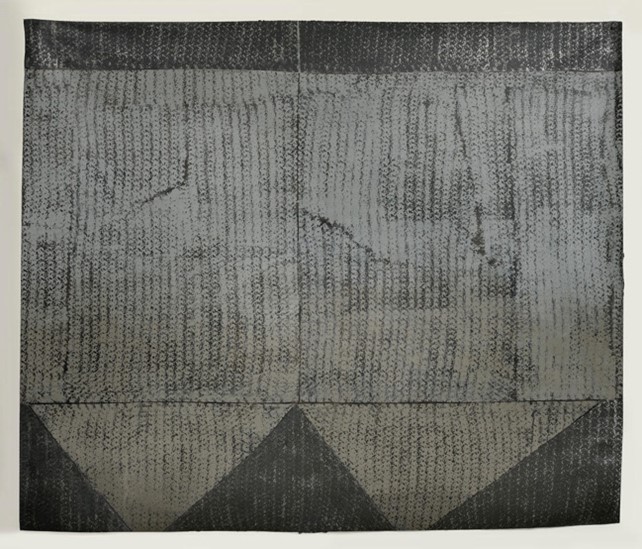
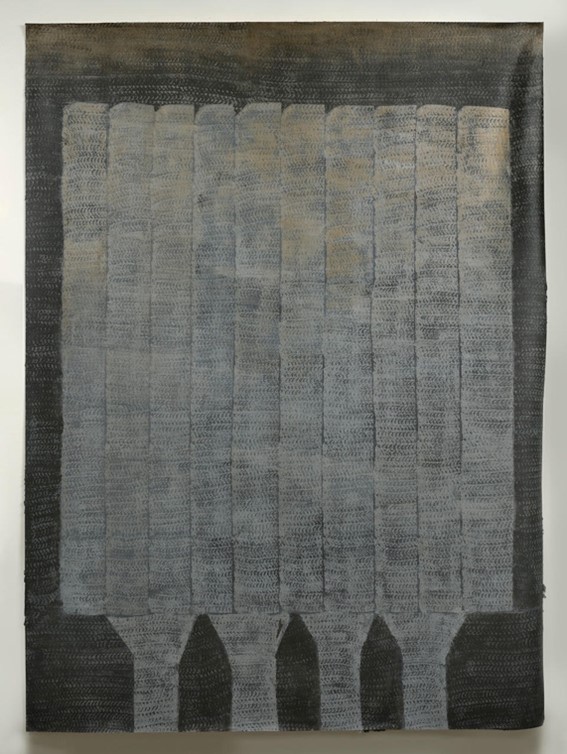
Burton’s titles are double entendres and bring a sense of play to the subjects. Chamber refers to an auditorium by way of an implied acoustical structure. The idea again is metaphorical, not literal, as in Ross Bleckner’s Architecture of the Sky.

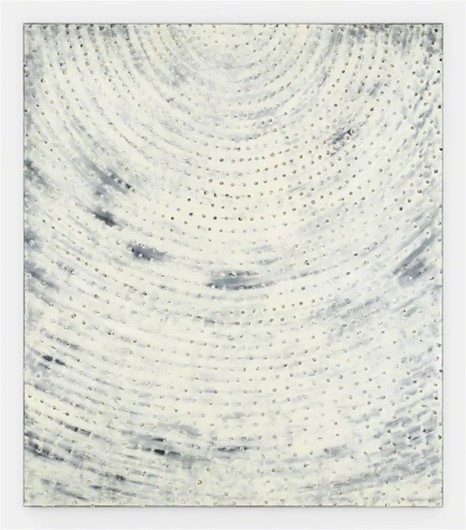
Many of Burton’s paintings have an edgy iconicity that remind me of Serge Poliakoff.
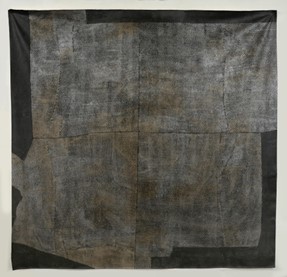
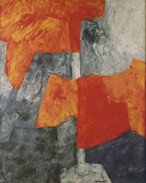
Like Agnes Martin in her later years, Burton likes to pair or twin images. Towers I could refer to the World Trade Center or perhaps the cooling towers of a nuclear power plant. Pairing, of course, was often a Pop Art strategy. From a much homier angle, Burton’s ghost printing of Afghans alludes to the handmade, sometimes basket-like facture of folk art.
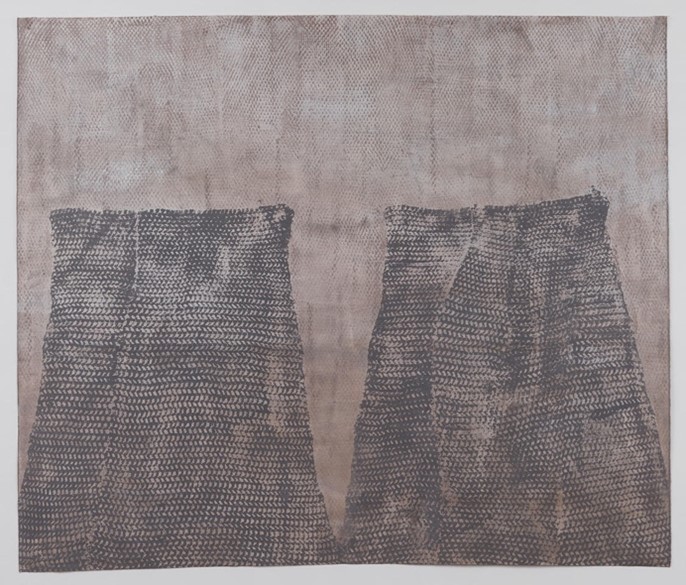
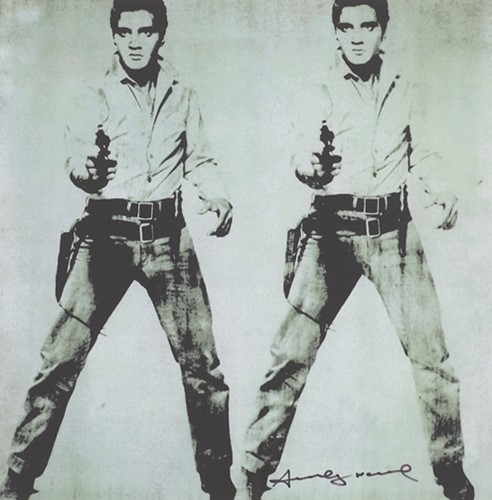
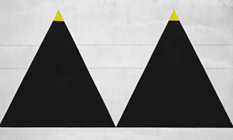
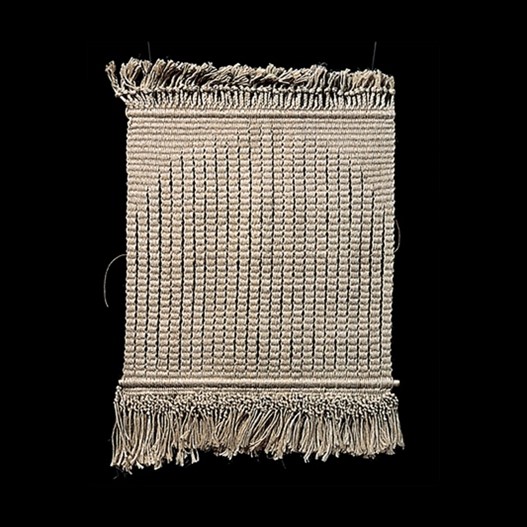
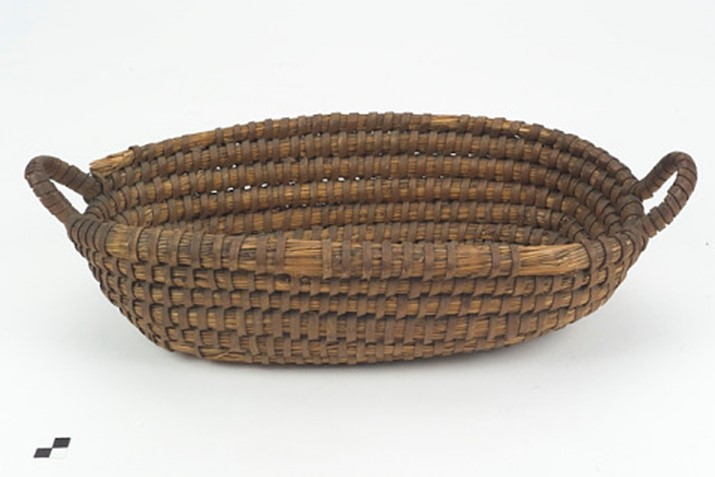
The imprint of the blankets gives Burton’s painting a faux optical texture that varies in rhythm. Her paintings invariably have a multivalent quality, equally and non-hierarchically functioning as paintings, prints, and objects. Perhaps this compelling in-betweenness keeps people looking a bit longer.
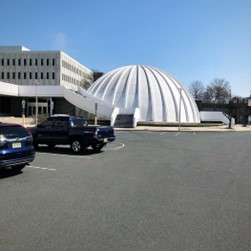
“Caroline Burton: Way Finding,” Riverside Gallery, New Jersey State Museum, 205 West State Street, Trenton, NJ. Through March 31, 2024.
About the author: Michael Brennan is a Brooklyn based painter who writes on art.

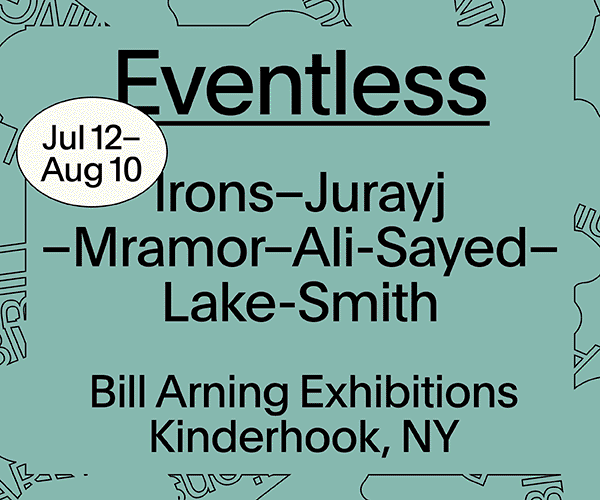
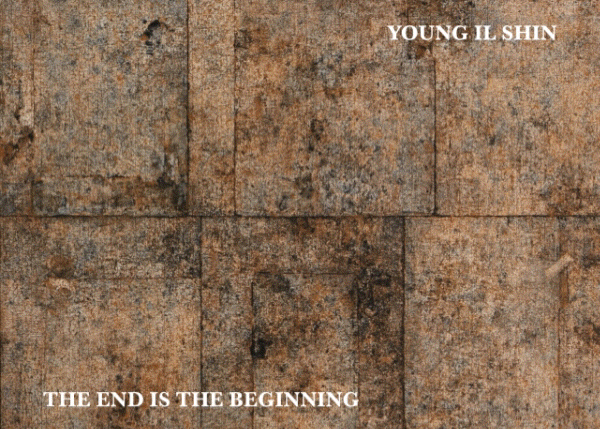
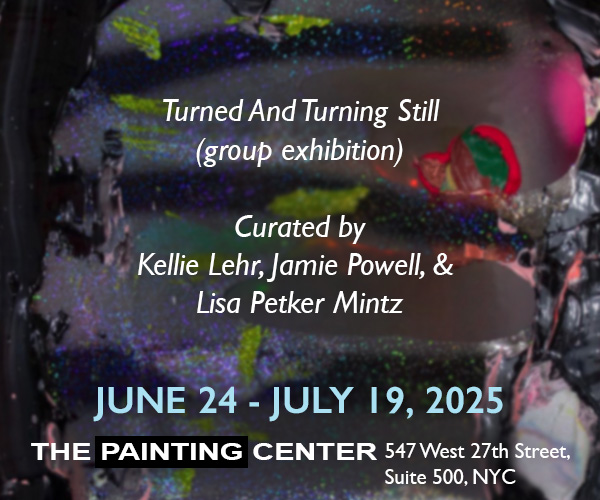
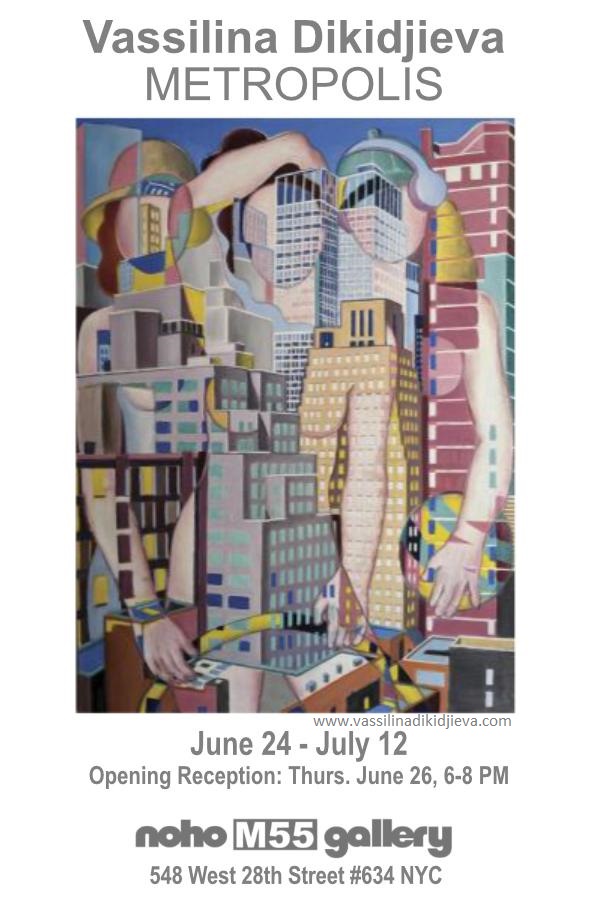
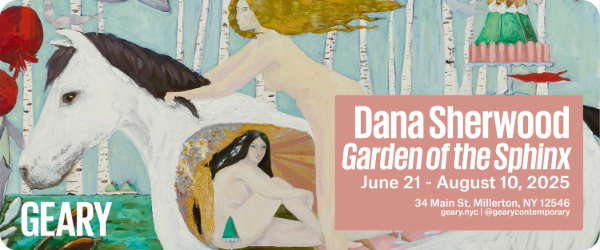










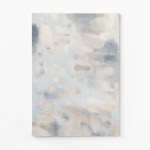
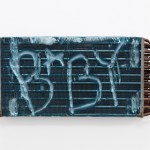
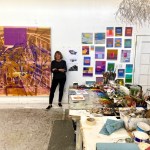

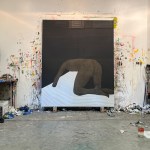
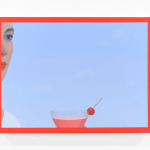
Thoughtful review of terrific work. Thank you.
Totally engaing review as the art historical references were spot on and insightful. Happy for Caroline !
Thank you, Michael Brennan and Two Coats of Paint, for this contemplative, masterful review of my show and work. I appreciate the context and insights as well as the references to the museum itself!
Excellent evocation of an exhibition that I wish I had seen !